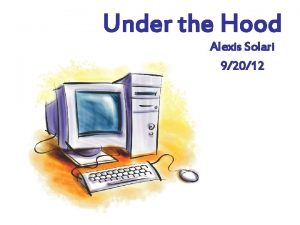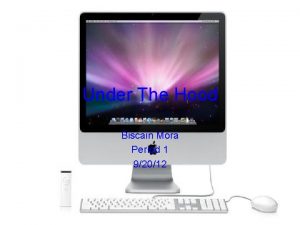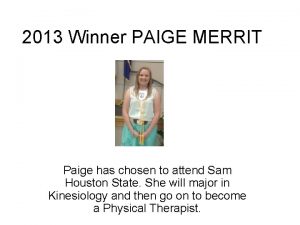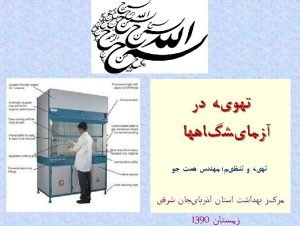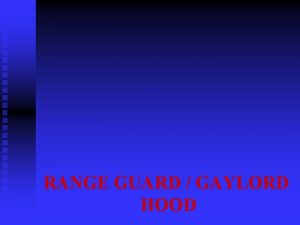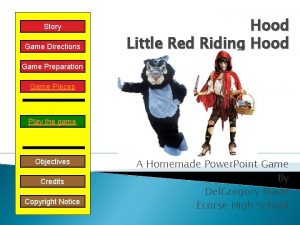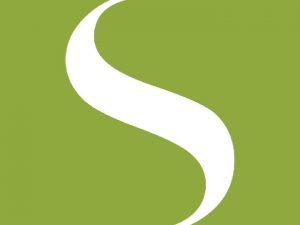Under the Hood Paige Thomas 92012 1 st














- Slides: 14

Under the Hood Paige Thomas 9/20/12 1 st period

Where to save files • Flash drive • Student File • Burn a CD • Email to your self • On your desktop

3 Types of Software • System Software the code that boots the computer and controls the devices, resources and applications. Everyday folks know this as Windows, Mac, Linux, Unix, etc. This is typically read from disk and loaded into RAM, although it could also be manifested as PROM, in which case it is read from • Application Software Application software utilizes the capacities of a computer directly for a dedicated task. Application software is able to comprehend text, numbers and graphics. It can be in the form of software focused on a certain single task like word processing, spreadsheet or playing of audio and video files. Here we look at the application software types along with some examples of application software of each type. • Data Software: A term used to describe any software used to create or manage date

Computer Hardware • • • Pc Case: a PC case is a thin sheet of metal that covers the motherboard, power supply, and various drives. Floppy Disk Drives: Floppy disks are small, removable, media storage devices. They record data onto a thin, circular magnetic film encased in a flat, square plastic jacket. This type of media is somewhat antiquated, having been replaced by flash memory and re-writable CD storage devices. Compact Disk Drive: A compact disk drive is exactly like a DVD in the sense that they both contain a form of data. When the CD is inserted into the drive, the computer reads the disk and it transmits it just like a floppy disk. Keyboard: The keyboard is the first input device for a PC. As you type on the keyboard the words appear on the screen. This is how you produce a word processed document. Mouse: A mouse allows people to move the arrow on your screen and you can click on anything you want. Documents, files, websites, and much more. Its also an animal but is also a innovative device.

Computer Hardware • Speakers A speaker is a term used to describe the user who is giving vocal commands to a software program. • Sound card: sound card is an expansion card or integrated circuit that provides a computer with the ability to produce sounds that can be herd through speakers or headphones. PSU (power supply unit): The power supply unit's job is to convert the power provided from the outlet into useable power for the many parts inside the computer case. • • Monitor: A computer monitor is were it shows all the pictures they look similar to a T. V. Hard drive: It is a device that stores and retrieving digital information mostly computer data.

Important events • • • 1939: David Packard and Bill Hewlett found Hewlett-Packard in a Palo Alto, California garage. Their first product was the HP 200 A Audio Oscillator, which rapidly becomes a popular piece of test equipment for engineers. Walt Disney Pictures ordered eight of the 200 B model to use as sound effects generations for the 1940 movie “ Fantasia” 1957: In Minneapolis, the original Engineering Research Associates group led by Bill Norris left Sperry Rand to form a new company, Control Data Corp. , which soon released its model 1604 computer. 1970: Computer-to-computer communication expanded when the Department of Defense established four nodes on the ARPANET: the University of California Santa Barbara and UCLA, SRI International, and the University of Utah. Viewed as a comprehensive resource-sharing network, Apranets’s designers set out with several goals: direct use of distributed hardware services; direct retrieval from remote, one-of-a-kind databases; and the sharing of software subroutines and packages not available on the users´ primary computer due to incompatibility of hardware or languages. 1978: The 5 ¼” flexible disk drive and diskette were introduced by Shugart Associates in 1976. 1981: Adam Obsborne completed the first portable computer, the Obsorne 1. wich weighed 24 punds and cost $1, 795. The price made the machine specially attactive, as it included software worth about $1, 500. ,

Important events • 1983: The Bernoulli Box is released. Using a special cartridge-based system that used hard disk technology, the Bernoulli Box was a type of removable storage that allowed people to move large files between computers when few alternatives (such as a network) existed • 1987: Motorola unveiled the 68030 microprocessor. A step up from the 68020, it built on a 32 -bit enhanced microprocessor with a central processing unit core. • 1988: Apple cofounder Steve Jobs, who left Apple to form his own company, unveiled the Ne. XT. The computer he created failed but was recognized as an important innovation. At a base price of $6, 500, the Ne. XT ran too slowly to be popular. • 1990: Video Toaster is introduced by New. Tek. The Video Toaster was a video editing and production system for the Amiga line of computers and included custom hardware and special software. Much more affordable than any other computer-based video editing system • 1994: Yahoo is founded. Founded by Stanford graduate students Jerry Yang and David Filo, Yahoo started out as "Jerry's Guide to the World Wide Web" before being renamed. Yahoo originally resided on two machines, Akebono and Konishiki, both named after famous Sumo wrestlers. Yahoo would quickly expand to become one of the Internet’s most popular search engines.

Measurement terms • Bit= a single 0 or 1, Byte= 8 bits (any combination of 8 0's or 1's) Kilobyte (KB)= 1024 bytes Megabytes (MB)= 1024 KB Gigabyte (GB)= 1024 MB Terabyte (TB)= 1024 GB Petabyte (PB)= 1024 TB Exabyte (EB)= 1024 PB RAM: An acronym for Random Access Memory, a type of computer memory that can be accessed randomly.

First Personal Computer • Steve Jobs and Steve Wozniak made a natural team inventing the first ready-made personal computer. To Wozniak's engineering talent, Jobs added ingenuity and marketing instincts, the ingredients that tuned Apple into a billion-dollar company.

First Laptop Designed in 1979 by a Briton, William Moggridge, for Grid Systems Corporation, the Grid Compass was one fifth the weight of any model equivalent in performance and was used by NASA on the space shuttle program in the early 1980's. A 340 K byte bubble memory lap-top computer with die-cast magnesium case and folding electroluminescent graphics display screen.

Virus, worm, trojan horse • • Virus: In computers, a virus is a program or programming code that replicates by being copied or initiating its copying to another program, computer boot sector or document. Viruses can be transmitted as attachments to an e-mail note or in a downloaded file, or be present on a diskette or CD. The immediate source of the e-mail note, downloaded file, or diskette you've received is usually unaware that it contains a virus. Worm: Computer worms are malicious software applications designed to spread via computer networks. Computer worms are one form of malware along with viruses and trojan. A person typically installs worms by inadvertently opening an email attachment or message that contains executable scripts. Once installed on a computer, worms spontaneously generate additional email messages containing copies of the worm. Trojan Horse: In computers, a Trojan horse is a program in which malicious or harmful code is contained inside apparently harmless programming or data in such a way that it can get control and do its chosen form of damage, such as ruining the file allocation table on your hard disk. In one celebrated case, a Trojan horse was a program that was supposed to find and destroy computer viruses. A Trojan horse may be widely redistributed as part of a computer virus. To get rid of a virus you should download an anti-virus software.

Founders • Steve Jobs is the founder of Apple • Stan Shih is the founder of Acer • Michael S. Dell is the founder of Dell • Hewlett-Packard is the founder of Hp • Steve Wozniak is the founder of PC

Websites Used • http: //www. computerhistory. org/timeline/? year=1 957 • http: //www. biography. com/people/steve-wozniak 9537334 • http: //inventors. about. com/library/inventors/bllapt op. htm • http: //wiki. answers. com/Q/What_are_the_compu ter_measurements_for_bits_bytes_etc. • http: //searchsecurity. techtarget. com/definition/vir us

Future • I think that we will have computers that will come with us anywhere we want. I think that they will be transparent and you can only see the screen and keyboard. I also think that everyone will start to carry them around with them wherever they go.















